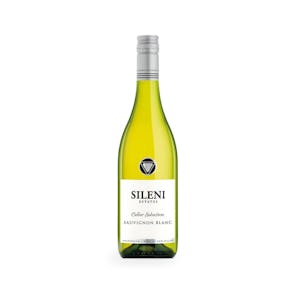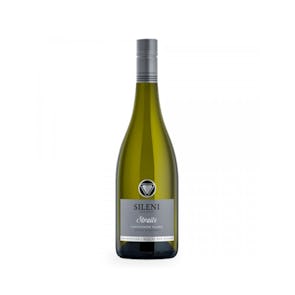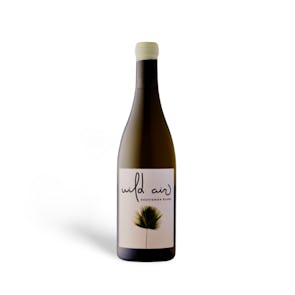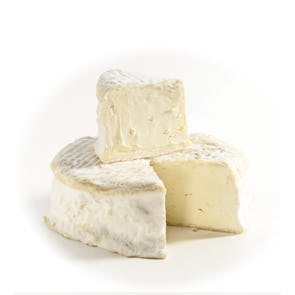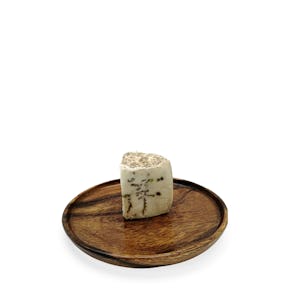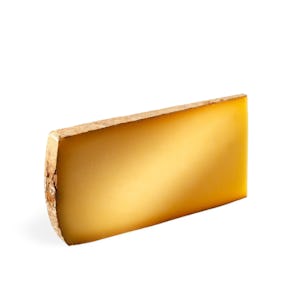






Picodon D’Ardeche
The spicy cheese
(Thursday Aug 07 , 2025)
TASTING NOTES FROM THE CURATOR
Coming in small, flat circular discs with a hard natural rind, the Picodon is a raw goat’s milk cheese that evolves beautifully with age. Only a minimal amount of rennet is used before the curds are poured into molds, resulting in a delicate yet complex cheese that showcases the nuances of traditional cheesemaking.
At its youngest stage (8–12 days), Picodon has a supple, smooth center with a fresh, lactic, and slightly tangy profile. This youthful version often has a clean white rind with hints of natural bloom.
As it continues to mature, Picodon begins to reveal more complexity, developing stronger aromas, denser textures, and deeper flavors. This results in two distinct stages worth highlighting:
At mid-age maturity (15–30 days), the Picodon begins to resemble a Crottin de Chavignol in texture. It is semi-soft and dense, with a creamier mouthfeel and a slightly peppery, earthy flavor. Green or blue-green patches of natural mold may appear on the rind, signaling active affinage. The cheese has a pleasant tang, and the mold bloom adds depth without overwhelming the palate. It offers a balanced experience for those who want something complex but not too assertive.
At extra mature stage (30+ days), the transformation becomes dramatic. The rind turns brown and wrinkled from dehydration and oxidation. The interior becomes oozing and soft (due to an enzymatic breakdown), especially near the rind—more akin to an Epoisses in its boldness. The flavor is intense, spicy, barnyardy, and nutty, with strong fermented undertones. This stage is for true connoisseurs of aged goat cheese, seeking deep, unfiltered character and wild ripeness.
These visual and textural changes aren’t flaws — they are hallmarks of a traditional, living cheese. Each rind tells a story of age, environment, and flavor.
PAIRINGS AND PREPARATION
Picodon’s versatility lies in its maturity, with each stage offering a distinct tasting experience:
- Young Picodon (8–12 days): Soft and mild with a fresh, lactic flavor. Ideal for topping salads, or spreading on crusty bread with olive oil and herbs.
- Mid-Age Picodon (15–30 days, Green Rind): Semi-soft and dense, with a slightly peppery and earthy taste reminiscent of Crottin de Chavignol. Try it crumbled over warm lentils, roasted vegetables, or served with garlic and shallots. Pairs beautifully with light red wines or crisp whites.
- Extra Mature Picodon (30+ days, Brown Rind): Oozing and bold, this version recalls the pungent creaminess of an Époisses. A perfect addition to cheese boards, its spicy, nutty depth complements milder cheeses. It also excels in warm dishes like Cirque Ardéchoise—a rustic Ardèche potato-and-cheese pancake where the Picodon melts into rich, flavorful layers.
THE SPICY CHEESE
The word “Picodon” comes from the old Occitan language once spoken across Southern France. It means “spicy” or “piquant,” a fitting name for a cheese that develops its strongest character with age. Whether sporting a green mold bloom or a rustic brown rind, Picodon invites you to taste the evolution of terroir, tradition, and time.
Storage Instructions
Cheeses (except brined ones in jars) should be stored in the crisper or the butter drawer of a refrigerator, not on the shelves themselves. This is to help regulate their temperature and humidity levels—and prevents the formation of mold. Once opened, they should not be kept in their original packaging. Soft cheeses with delicate rinds need to breathe, so they are best placed in glass containers lined with paper towels to absorb extra moisture. Leave the lid open a tiny bit for air to circulate and don’t forget to write up a label with the date you first opened the package. Your cheese will be fine for up to one month.

